Doctors were not far from the farm, but they were few. So Fran studied home remedies and took notes from friends and publications. Asthma and headaches are addressed more frequently than other ailments.
In ink: For cough: 1 cup sugar + 1 t. ginger. Aunt Della.
Article on asthma, listing possible causes –dust, fur, pollen, feathers, cooking, breath of horse, dog, or cat, or nervousness, indiscretions in diet, pelvic disease in women, infections of upper air passages, and enlarged tonsils – and ways to diagnose and manage it.
“Scotland Forever” tells “Four O’Clock” to try white petroleum ointment for asthma.
Handwritten: “Old fashioned laxative recipe by Nurse Brown, Sanford Mills”: ½ pound each: figs, prunes, dates; 2 cups molasses; 2 ounces powdered Senna. Put figs, prunes, dates through coarse meat grinder. Mix powdered Senna with molasses. Then add ground fruit and mix good. (Take night and morning until relieved).
“Lemon Juice for Health and Beauty”: as bleach for freckles; as astringent; as gargle; as medicine for cold, hated; with honey for cough; for “biliousness and nervous headache” with hot water on empty stomach; for insect bites
“Shoes and feet” column: What to do about shoe fit, corns, bunions, high heels
from Ann Campbell poem “Goose Grease”:
…“Goose grease and warm red flannel
Would cure the hardest cold”
Handwritten: Home Made Cough Syrup (very good):
2 cups granulated sugar
1 cup water
stir a few moments until dissolved
2 ½ ounces of Pinex
mix all together
Put in pint bottle.
Handwritten:
Croup
½ cup lard melted
stir in enough sugar to sweeten it
If child does not like it add a little lemon or vanilla for taste.
Very good – give warm.
160-164 Handwritten
Home Remedies for:
Pleurisy, Bronchial Pneumonia, Sour Throat, Boils, Dipthery Croup, Asthma, Neuralgia, Lameness, Drawing (eg. Splinter), Enlarged Tonsils, Scalds and Burns
Newspaper clipping: “Scalds and burns can be cured almost immediately by applying a poultice made of oatmeal and cold water.” The cooling qualities of the meal help to draw out the fire from the burn, while its soothing properties heal it.”
Pleurisy
Make 2 bags of flaxseed poultises (sic)18X9 or so as to cover back & front. Take double boiler, keep one in it all the time – change every 15 minutes. (Flaxseed Poultice thickin (sic) with boiling H2O like for cream of wheat) Give plenty of laxative.
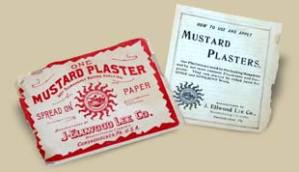 Mustard Plaster to stay on all night. Mix mustard & lard until you can spread paste. Then sprinkle with turpentine. Place between cloths.
Mustard Plaster to stay on all night. Mix mustard & lard until you can spread paste. Then sprinkle with turpentine. Place between cloths.
Bronchial Pneumonia
Make a plaster (warm) 1 tbl of mustard & 3 of flour, mix with cold H2O. Keep on until skin is deep pink. Rub camphorated oil on until pink disappears. Then repeat plaster.
[[Wiki definition: Camphor is a waxy, white or transparent solid with a strong, aromatic odor. It is a terpenoidwith the chemical formula C10H6O. It is found in wood of the camphor laurel (Cinnamomum camphora), a large evergreen tree found in Asia (particularly in Borneo and Taiwan and also of Dryobalanops aromatica, a giant of the Bornean forests. It also occurs in some other related trees in the laurel family, notably Ocotea usambarensis. It can also be synthetically produced from oil of turpentine. It is used for its scent, as an ingredient in cooking (mainly in India), as an embalming fluid, for medicinal purposes, and in religious ceremonies. A major source of camphor in Asia is camphor basil.
Although many people have no idea of what camphorated oil is, they have heard of it from an old song. In this song, sung to the tune of the “Battle Hymn of the Republic,” John Brown’s baby had a cold upon its chest, so he rubbed it with camphorated oil. As the song suggests, camphorated oil is good for colds and flu. But what is it?
History
- The first use of camphor is recorded in China, where oil of camphor is still much prized for it’s medicinal uses today. Marco Polo first wrote his observations on the use of camphor oil when describing his stay in China during the 13th century. Oil of camphor is obtained by cutting down a 50-year-old camphor tree and then distilling the wood. One tree can produce up to three tons of camphor. Its leaves may also be used as an herb.
Properties
- Camphor oil is known for it’s strong, pungent aroma. Because large doses can be toxic, it is tightly regulated in the United States. In medicine compounds, camphor is only allowed to account for 11 percent of the medicine’s total makeup.
Internal Uses
- Camphor has anti-inflammatory properties. Though it is pungent, it is not used as a decongestant. Instead the smell stimulates the cold receptors in the mucus membranes as well as acting as a spasmolytic in bronchial tubes. When taken internally, camphor is known to aid digestion and kill parasites. It is also believed to improve circulation and ease joint pain.
External Uses
- When made into a liniment, camphor can be used to treat sprains, joint pain and muscle soreness. It can also be used as a balm on cold sores and chapped lips.
Warning
- Camphor’s toxic properties may be absorbed through the skin as well as ingested. For this reason, caution must be used when treating camphorated oil as an essential oil. Camphor should never be used as a massage oil. However it may be used for vapor therapy to ease respiratory problems. ]]
Dipthery Croup (Fran’s two older sisters, Dorothy and Vesta, had died of Black Diptheria in the 1890s, so Dipthery would have been of particular concern to her.):
“Nurse ties thick flannel over her mouth and nose. Fill pan ½ full of burning coals. Sprinkle a spoonful of sulphur (sic) over coals, pick up child, hold him face downward, right over choking, blinding fumes. Soon child will cough up membrane that is killing him.
Then lay him down in crib.
Smoke throat once or twice again just to kill germs.
This also saved a girl from dying from pneumonia.
Eats for sore throat, bread & milk.”
[[Wiki Definition: Croup is breathing difficulty accompanied by a “barking” cough. Croup, which is swelling around the vocal cords, is common in infants and children and can have a variety of causes.
Causes
 Viral croup is the most common. Other possible causes include bacteria, allergies, and inhaled irritants. Acid reflux from the stomach can trigger croup.
Viral croup is the most common. Other possible causes include bacteria, allergies, and inhaled irritants. Acid reflux from the stomach can trigger croup.
Croup is usually (75% of the time) caused by parainfluenza viruses, but RSV, measles, adenovirus, and influenza can all cause croup.
Before the era of immunizations and antibiotics, croup was a dreaded and deadly disease, usually caused by the diphtheria bacteria. Today, most cases of croup are mild. Nevertheless, it can still be dangerous.
Croup tends to appear in children between 3 months and 5 years old, but it can happen at any age. Some children are prone to croup and may get it several times.
In the northern hemisphere, it is most common between October and March, but can occur at any time of the year.
Diphtheria spreads through respiratory droplets (such as those produced by a cough or sneeze) of an infected person or someone who carries the bacteria but has no symptoms. Diphtheria can also be spread by contaminated objects or foods (such as contaminated milk).
The bacteria most commonly infects the nose and throat. The throat infection causes a gray to black, tough, fiber-like covering, which can block the airways. In some cases, diphtheria may first infect the skin, producing skin lesions.
Once infected, dangerous substances called toxins, produced by the bacteria, can spread through your bloodstream to other organs, such as the heart, and cause significant damage.]]
Recipes for Onion Plaster, Mustard Plaster, Flaxseed Syrup, Cough Syrup, Drawing Application
Cough Syrup
Fry Salt Pork. Take the gravy & add molasses enough to make syrup. Then boil together until it syrups. Very good.
Handwritten: Poultice for Boil
1. Molasses & flour stirred stiff & applied directly to boil.
2. Yellow soap & brown sugar
3. Flaxseed poultice thicken with boiling water like cream of wheat
Take internally a teaspoonful night & morning of following:
6 tbl of sulphur & molasses
3 tabl. Cream tarter
For Boils
½ cup of warm corn meal, 1 cup water. Let set over night. Drink the liquid that forms on top for 9 mornings.
Eat salt on raw onions every day.
Newspaper clipping:
“To keep boils away: 1 tablespoon cream of tartar, 2 tablespoons Epsom salts, juice of 1 lemon, 1 quart boiling water. Take one tablespoon three times a day.
Handwritten:
Boils
Make a poultice of yolk of raw egg & 1 tbl. Salt. Make a paste of it and spread on cloth and apply to boil.
Mrs. Charles Spendlove
very good
For Lameness
Take 1 teaspoonful of sulphur in ½ glass of milk every night for 6 weeks
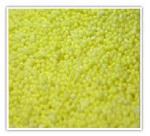 [[Wiki Definition: Sulfur or sulphur is the chemical element that has the atomic number 16. It is denoted with the symbol S. It is an abundant, multivalent non-metal. Sulfur, in its native form, is a bright yellow crystalline solid. In nature, it can be found as the pure element and as sulfideand sulfate minerals. It is an essential element for life and is found in two amino acids: cysteine and metheonine. Its commercial uses are primarily in fertilizers, but it is also widely used in black gunpowder, matches, insecticides and fungicides. Elemental sulfur crystals are commonly sought after by mineral collectors for their brightly colored polyhedron shapes. In nonscientific contexts, it can also be referred to as brimstone (the “burning stone”).
[[Wiki Definition: Sulfur or sulphur is the chemical element that has the atomic number 16. It is denoted with the symbol S. It is an abundant, multivalent non-metal. Sulfur, in its native form, is a bright yellow crystalline solid. In nature, it can be found as the pure element and as sulfideand sulfate minerals. It is an essential element for life and is found in two amino acids: cysteine and metheonine. Its commercial uses are primarily in fertilizers, but it is also widely used in black gunpowder, matches, insecticides and fungicides. Elemental sulfur crystals are commonly sought after by mineral collectors for their brightly colored polyhedron shapes. In nonscientific contexts, it can also be referred to as brimstone (the “burning stone”).
Early alchemists gave sulfur its own alchemical symbol which was a triangle at the top of a cross. In traditional medical skin treatment which predates modern era of scientific medicine, elemental sulfur has been used mainly as part of creams to alleviate various conditions such as scabies, ringworm, psoriasis, eczemaand acne. The mechanism of action is not known, although elemental sulfur does oxidize slowly to sulfurous acid, which in turn (through the action of sulfite) acts as a mild reducing and antibacterial agent.]]
p. 163 – newspaper letter:
Dear Anxious at 31 – I want to tell you about my little girl, who suffered with St. Vitus dance at the same age as yours, and what I did to cure her. The doctors…gave her very powerful medicine, one drop to be taken at a time. It did not help, and I took her to a woman doctor. She advised me to change her diet, with no sweets whatever, not even a cookie. Give her one quart of milk daily and plenty of vegetables; steam them so to keep the iron, and at times grind them up raw and make a salad. Give her some chicken and lamb, but no beef.
Keep her in the sun, with plenty of air both day and night, and do not let anyone ridicule her on account of her condition.
If you follow these rules for a few weeks I am sure your little girl will gain and her nerves will be stronger, just as mine did.
One Who has Been Through It
[[Wiki Definition: Sydenham’s chorea or Chorea minor (historically referred to as Saint Vitus’ Dance) is a disease characterized by rapid, uncoordinated jerking movements affecting primarily the face, feet and hands. Sydenham’s chorea (SC) results from childhood infection with Group A beta-hemolytic Streptococci and is reported to occur in 20-30% of patients with acute rheumatic fever (ARF). The disease is usually latent, occurring up to 6 months after the acute infection, but may occasionally be the presenting symptom of RF. SC is more common in females than males and most patients are children, below 18 years of age. Adult onset of SC is comparatively rare and most of the adult cases are associated with exacerbation of chorea following childhood SC.
It is named for British physician Thomas Sydenham, (1624–1689). The alternate eponym, Saint Vitus’ dance, is in reference to Saint Vitus, a Christian saint who was persecuted by Roman emperors and died as a martyr in AD 303. Saint Vitus is considered to be the patron saint of dancers, with the eponym given as homage to the manic dancing that historically took place in front of his statue during the feast of Saint Vitus in Germanic and Latvian cultures.]]
To the Reader Suffering From Migraine – [Writer offers article from a Havana, Cuba newspaper]:
“After years of suffering from periodic sick headaches or migraine attacks, always ushered in by a peculiar aura of prismatic lights, visible at one side and lasting 15 to 30 minutes before the headache commenced, I found an old doctor who dubbed the trouble ‘blind staggers,’ same as horses have. He recommended taking immediately on the appearance of the aura, a half-teaspoon of soda, followed by 15 drops of aromatic spirits of ammonia in water. These headaches, however, have a way of diminishing in intensity frequently around middle age.”
Handwritten beneath letter:
For stomach ache or gas pains. Aunt Dell. (Aunt Dell is one of Fran’s New Hampshire aunts, sister of William Davis .)
 2 t. cream tarter, 1 soda, a sugar; mix thoroughly
2 t. cream tarter, 1 soda, a sugar; mix thoroughly
½ glass cold water to ½ dose
Take 2nd dose if necessary
For sick headache or stomach aches
1 heaping t. soda, a heaping t. salt, ½ glass cold water.
Uncle Henry (Dell’s husband in NH)
[[Wiki Definition: Cream Of Tartar (Potassiun Bitartrate) exists in grapes, tamarinds, and other fruits. It is traditionally prepared from the crystalline crust (crude tartar or argol) deposited on the vessels in which grape juice has been fermented. The argol is dissolved by boiling with water, the mixture filtered, and the cream of tartar allowed to crystallize out. The commercial product usually contains a small percentage of calcium tartrate. It is frequently employed in medicine for its diuretic, cathartic, and refrigerant properties; as a mordant in dyeing wool; and as an ingredient in baking-powder.]]
By her early 50s Fran will go blind from glaucoma. The doctor who finally diagnosed her condition told her he wished he had seen her sooner, that it had probably been developing for awhile. When we grandchildren knew her, she still spoke of debilitating headaches – “like a vice gripping my head” and of flashes of light in her head, “like lightening all over my brain”
Handwritten:
Neuralgia
Mustard plaster over affected part
1 of flour and 2 of mustard
——–
Mrs. Defossey remedy
raw grated carrots in bag bound on over affected part
[[Wiki Definition: Neuralgia is pain in one or more nerves that occurs without stimulation of pain receptor (nociceptor) cells. Neuralgia pain is produced by a change in neurological structure or function rather than by the excitation of pain receptors that causes nociceptive pain. Neuralgia falls into two categories: central neuralgia and peripheral neuralgia. This unusual pain is thought to be linked to four possible mechanisms: ion gate malfunctions; the nerve becomes mechanically sensitive and creates an ectopic signal; cross signals between large and small fibers; and malfunction due to damage in the central processor.
Neuralgia was first recognized by François Louis Isidore Valleix. It was subsequently noted by Silas Weir Mitchell (1829–1914), a neurologist in the American Civil War, who noticed hyperalgesia and chronic pain in patients who had nerve lesions in the extremities and also some cases where no lesion was observed: These causalgias were certainly major by the importance of the symptoms, but stemmed from minor neurological lesions”. Mitchell termed the condition “causalgia” which has since become known as “Complex Regional Pain Syndrome” Type 1 and Type 2” (CRPS). CRPS Type I is a syndrome that develops after an initiating noxious event, and Type 2 describes a case when nerve damage is clear.]]
Drawing Application
Stir bread & milk to-gether. Let come to a boil and boil a little while until you can spread a little on cloth. Apply to splinter or whatever you want to draw.
p. 176 – News clip: “When a splinter has gone very deeply into the flesh, try extraction by steam. Heat a wide-mouthed bottle and fill it two-thirds full of very hot water and place under the injured spot. The suction draws the flesh down when a little pressure is used, and the steam in a few minutes removes both splinter and inflammation.”

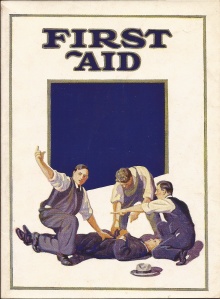
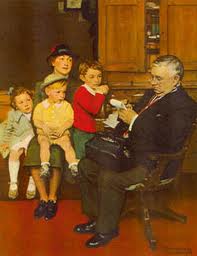



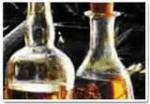

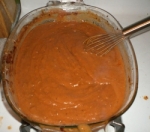

I was unable to “like” the page because for some unknown reason I was unable to sign in.